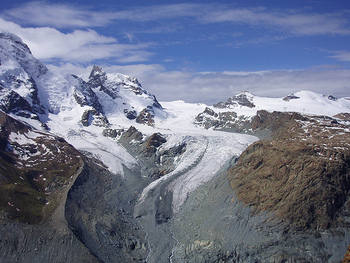The Ski Report from 2025
by Jules Older
Though most Alaskans, Vermonters and Minnesotans are enjoying the unprecedented winter warmth, skiers are not. Except in freak years, like 2014 and the epic 2015, there's precious little snow falling on mountains. Rain, yes; snow — not with any consistency and not ‘when it’s supposed to.’ Sir Albert Gore, as everyone except the most recalcitrant deniers now concede, was right — climate change proved to be all-too real.
 Here's where we stand in February, 2025.
Here's where we stand in February, 2025.
Europe’s lower slopes have reverted to pasture; in the foothills of the Alps, goats have replaced skiers. New Zealand’s already short season is, most years, down to three weeks. There's no more skiing in Australia except for water skiing.
But snow skiing has almost saved Dubai. Even with its current tourism woes, winter sport is thriving there; they now have sixteen indoor hills open 24/7 and three more under construction.
American skiers look at Dubai with open envy. In New England, the only ski resorts left are Killington and Jay Peak in Vermont, Sugarloaf and the newly important Saddleback in Maine. All four have pretty much given up opening before New Years; all four are spending big bucks promoting spring skiing. Slogan: “April is way cool!”
Except for Jiminy Peak, which had the foresight to install plastic bristles in 2118, and Wachusett, which covered itself with a dome the following year, there is not a single outdoor ski area left in southern New England.
The entire mid-Atlantic ski business has been wiped out, along with most of the Midwest. In the West, New Mexico, southern Utah and with two exceptions, California, are ski-free zones.
In California, there's still lift-accessed snow on what was the top of Mammoth Mountain and, during relatively cold winters, on Kirkwood’s upper slopes. In Utah, Brian Head is now “the country’s biggest mountain-bike terrain park.” California’s Heavenly promotes “big-mountain living.” Colorado’s Vail is “Your mountain dream.” Everybody uses “mountain;” only the lucky few mention “snow.”
Montana and northern Idaho are doing somewhat better, though Schweitzer changed its name to Snow Peak back in 2012. All in all, the higher and norther the terrain, the better the chance there's still skiable snow on it.
Even so, Canada is far from immune to the warming trend. Eastern Quebec is just getting by, but the once-thriving Laurentians are pretty much history. Vineyards dominate the beginner slopes of Tremblant. Chateau Mont Sutton Riesling debuted (to a lukewarm review in Wine Spectator) in 2022.
The ski clubs of Ontario are now tennis, swim and curling clubs; they've raised their dues to pay for swimming pools and to remove rusting chairlifts.
With few competitors, Alaska has become the last North American ski zone… except that two other whirlwinds of the perfect storm are now threatening operations there, too.
One is global fattening. The national obesity rate is pushing 80 percent. Canadians are at 75 percent; the Brits, 68. Sixpack chairlifts are down to fourpacks — not only were the seats too narrow, but the combined weight of 21st-century riders was too great.
And that’s not the worst of it. Since skiing and snowboarding are falling sports, there’s an ever-growing slice of the population pie that simply cannot participate. They've fallen and they can't get up.
As if global warming and global fattening weren't enough, along with spreading balminess and spreading bottoms, the third element of the storm is hitting skiing where it hurts. This one is global slothing.
Social scientists have confirmed what the active-sports industry has long known: people today are significantly more sedentary than their parents and grandparents. The World Health Organization declared just last year: “With the exception of sub-Saharan Africa and the Amazon Basin, the proportion of sedentary or near-sedentary adults now exceeds 89 percent.” Unfortunately for skiing, an ever-growing number of them would rather sit and watch than stand and play.
These sitters are also averse to discomfort and thus pretty much immune to the call of the cold. When they look at family photos of the old-timers enjoying winter, they view their grandparents’ rosy-cheeked smiles with a puzzlement that borders on disbelief. “Go skiing? Not when we haven't been to EasyLand, the hot, new combo NASCAR track, shopping mall, casino and beach in Georgia.”
As nearly everyone knows, EasyLand was to be built just north of Miami until that region started experiencing annual floods. Skiers take cold comfort knowing that theirs is not the only recreation arena living in reduced circumstances.
Jules Older is five-time winner of the Harold Hirsch Award for Excellence in Snowsports Writing. He's co-creator of the iPhone app, San Francisco Restaurants.